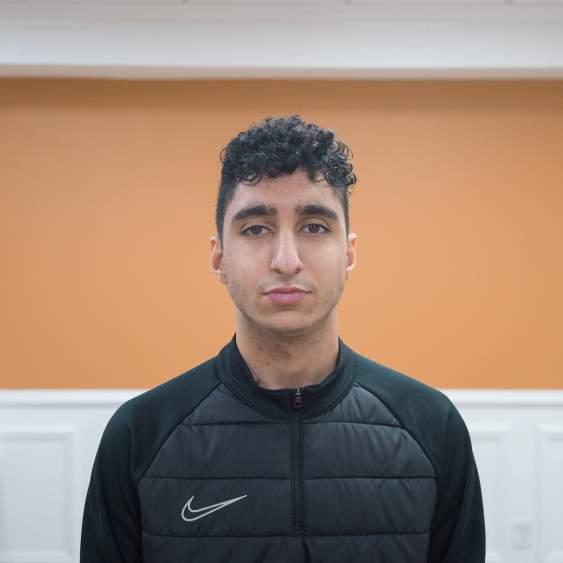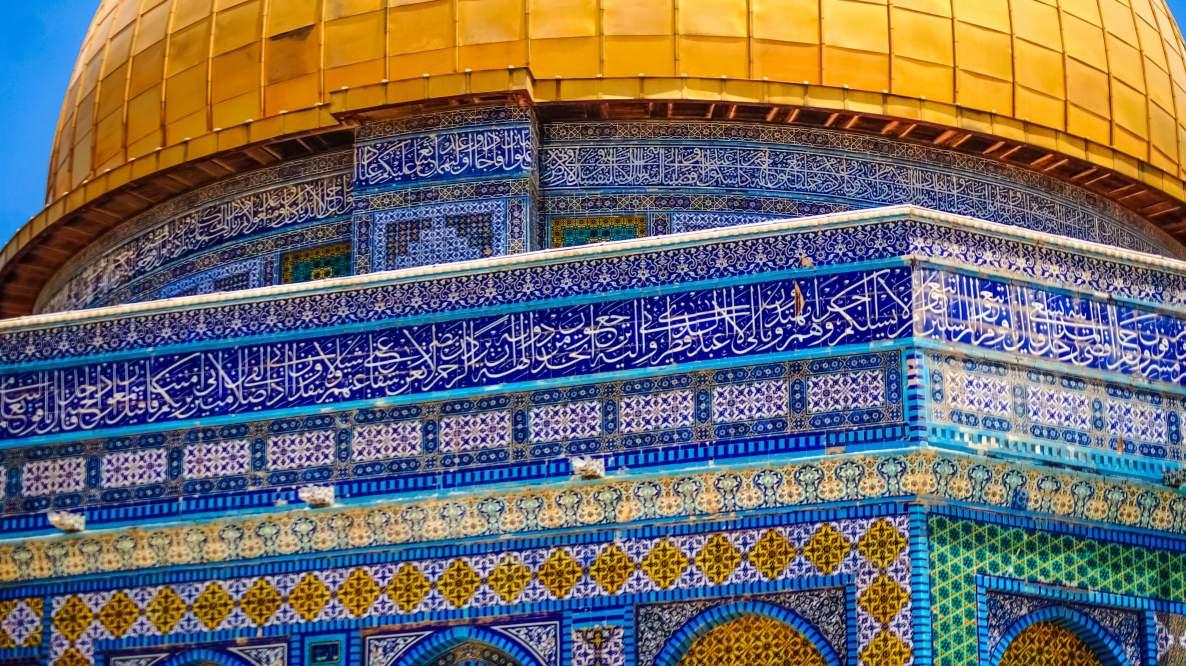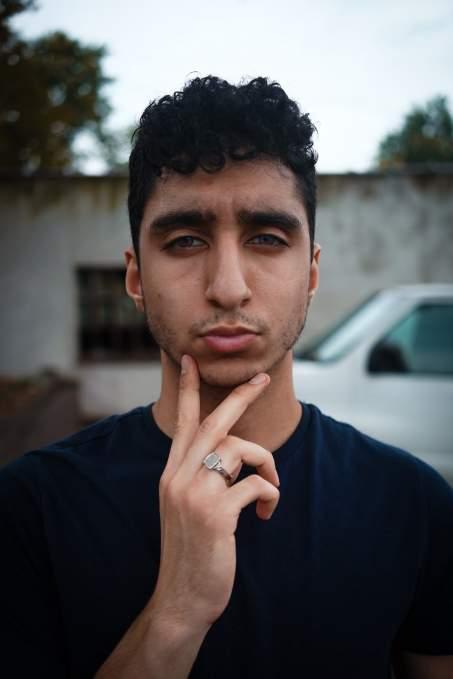
9 minute read
Ahmad Jamhour’s People of Palestine
from Falastin Volume 5 Issue 1
by paccusa
Reem Farhat
Photo by Ahmad Jamhour
Ahmad Jamhour is PACC’s head photography intern, a very active member of the community, and a talented photographer. This August, he launched his photography project “People of Palestine” which highlights Palestinian American youth in the Greater New York Area. The project can be viewed on his Instagram @peopleofpalestinenj. We sat down with him to learn about his inspiration for the project, what it means to be a Palestinian American, and how he connects to his Palestinian identity. We will be featuring his project throughout this volume of Falastin.
When did you get into photography?
It kind of just started as something I learned when I was bored. I used to have this iPad mini when I was in the fourth grade and there was an app on there where you can use different filters to take pictures, and that interested me a lot. I started going outside and taking pictures with that very same iPad. I developed a love for taking pictures and trying to see the beauty in everything around me. It took off from there.
Where do you think that attachment to Palestine comes from for you?
What I love so much about New Jersey is the Palestinian, Muslim and Arab communities that we have here. It is one of the biggest blessings that I have had in my life to have grown up around so many of my own people and that is very rare to find in any Western environment. I think that is why I was so attached to Palestine growing up. My parents always drove the idea in my head that you’re always Palestinian no matter what, and you have to stand up for Palestine.
Because your project centers around PalestinianAmericans in particular, what do you think it is that Palestinian Americans have to share and say and why is our narrative important?
Another blessing of living in the West is that we have certain privileges that allow us to talk about and inform people about Palestine. Recently, people in general, especially non-Palestinians, are becoming more receptive to conversations about Palestine. I really think it is the beginning of change. If people's ideas surrounding Palestine change, start to see the atrocities that are being committed against Palestinians, and understand the oppression that Palestinians live under, they're going to open their eyes and realize it’s wrong. I think it is the beginning of something big for Palestine.
What do you think is the power of photography?
The power of media and the power of photography is really just showing people what is going on. Take the explosion in Lebanon not too long ago; would we really have known how big the explosion was had it not been recorded? Would we really have thought it would have been that big of a deal if we didn't see the pictures and if we didn't see the people crying and all the streets covered in blood everywhere. Heartbreaking pictures make us want to do
something to cause change; they make us want to tell people about it, donate money, and spread awareness. Otherwise we're really clueless as to what goes on in the world.
What sparked your interest in this project?
As a Palestinian, I am disheartened by seeing what happens there and what my people go through. For example, multiple members of my family have been arrested for no reason -they were walking down the street in our village and were arrested and stayed in jail for years. One of my cousins had a verbal altercation with a soldier and was shot and then arrested for six years. So many people go through these experiences and even worse.
My idea for the project is trying to help the situation by shedding some light on people like myself. I am a young person who is attached to Palestine. I've only been there three times and I don't live there and I don't see my family a lot. But to say the least, I miss Palestine every single day. So I got the idea for the project from those two ideas: my personal attachment to Palestine and the need to do something with whatever means I had. My means is my photography. It is what I enjoy and the best way I can contribute.
I feel like I'm doing the right thing by doing this project because I do see what's going on in Palestine. I've not only seen pictures of these atrocities, but I've also witnessed some myself. For example, while on a trip to Palestine I was on a bus ride to Jerusalem with my family and I saw a little girl who was four or five years old arguing with an Israeli soldier. The Israeli soldier had his gun pointed on this five year old girl, a baby essentially. Even right now I feel emotional thinking about it. I thought to myself later on if I had taken a picture of that scene it would have changed a lot of hearts.
And I think that's absolutely where the idea for my project comes from. I have seen what goes on and I see the kind of pictures that other people take and it has always been a dream of mine to get into taking pictures like that. I think that this is the start for me because essentially I don't know how much change I'm going to cause doing this little project. I don't know how many people are going to see it. I don't know how widespread it's going to be but I don't care because at the end of the day I'm going to feel like I did something at least. Even if one person learned more about Palestine through my project, that would be enough for me.

Photo by Ahmad Jamhour

Ahmad Jamhour
“‘The old will die and the young will forget’ is a phrase that often runs through my mind. The identity of the Palestinian people is like a ship in the eye of a storm, being bombarded from all angles. The form of oppression that blunders us the most is a common cliche of oppressors from all throughout history. Anything that is native to our culture from food to clothing, suddenly becomes hip and frankly, stolen. I began my People of Palestine project to show the world that Palestinians cannot have their identity taken. This project is to put it out there that although the old will die, the young will never forget. We may not be in Palestine, but we are as connected to it as ever. I don’t know how much attention this series of posts will get, but I don’t care. My goal at the end of the day is to keep our ship afloat. I am a firm believer that we can make it through the storm that has slammed us for decades. Let’s prove to the world that Palestinians are here and thriving, and that no matter what, our identity will never be shackled by oppression.”
Photo by Ahmad Jamhour

Rania Mustafa
“We are Palestinian. We have the privilege of carrying that identity as Americans. And the simple reality is that we have to do something to incite change. That’s one of the reasons why I chose to spend my last six years as the Executive Director of the Palestinian American Community Center (PACC). At PACC, we are working today to ensure a better future tomorrow. A future where Palestinians can travel freely throughout Palestine. Where we can pray in Masjid Al-Aqsa without having to sneak in. Where kids can not only go to school without fear, but are able to do whatever they want once they graduate, free of the occupation and its worries. Where the sky is their actual limit and is not bogged down by the occupation. Where my grandfather may have had access to proper health care and could have managed living with a stroke better. Where the kids in the refugee camps can return to the homes of their ancestors and actualize their grandparents dreams of return. Where Palestinians can do whatever they want, free of an occupying force. Where mothers and fathers can protect their children and shield them from the harshness of the world. Where kids can just be kids.”
Photo by Ahmad Jamhour

Marah Siyam

Finding that small, expired can of paint in my garage changed my entire life plan the moment I smeared it over that canvas. I started painting after going on the Homeland Project with PACC. My relationship with Palestine changed dramatically. I saw the beauty, the pain, and myself in a new light. Hearing about the lives ripped apart by the occupation is one thing, seeing it and meeting people with real human stories is very different. I was 18 at the time, now I’m 21 so understanding my real emotional response to those situations is a lot better now. Painting was the escape that found me, like an exit sign shining through the smoke it led back to myself without the frustration and the detachment I was feeling from Palestine as a political narrative. Painting as an art form doesn’t mean much to me, I don’t need to perfect my craft I just need it to understand myself and my own roots, and that is enough for me and I hope it’s enough to do right by my ancestors. I wrote in a poem two years ago ‘If I’m to be killed for any of my identities that’s fine by me. They are all worth dying for.’ That line still means a lot to me. Being Palestinian isn’t about politics, war, or land it’s about fighting the erasure of our blood lines the people who didn’t need to fight, they only lived. And I want to live.” Photo by Ahmad Jamhour
Reem Farhat
When I was younger I'd listen with wide eyes and an imagination twice my size as my dad would tell me stories of the first Intifada like they were fairytales. Storytelling has always been my way of connecting with the world around me. Everyone has a story, but in Palestine it’s different. There’s more at stake, more to tell, and more to learn. Every tile on the ground has centuries of untold history only recorded in the pages of holy books. Every time I visit, leaving gets harder and harder. But I know that staying would be even more difficult, and I wonder what that says about me. I wonder why I can bring myself to be apart from a place that has given me so much. Last time I went, my mom and I were talking to a cab driver, exchanging abridged life stories, because no one in Palestine stays a stranger for long. He told us about how he’s been in a limbo, how he has no official documents and has never left the diffa. He was so interested in our travels, in what being on a plane felt like. He asked me what I was studying, and when I told him I was studying to be a journalist, he slowed the car, turned around and said, ‘Come back and tell our stories.’ I didn’t know how to express to him that that is all I’ve ever wanted to do.”








